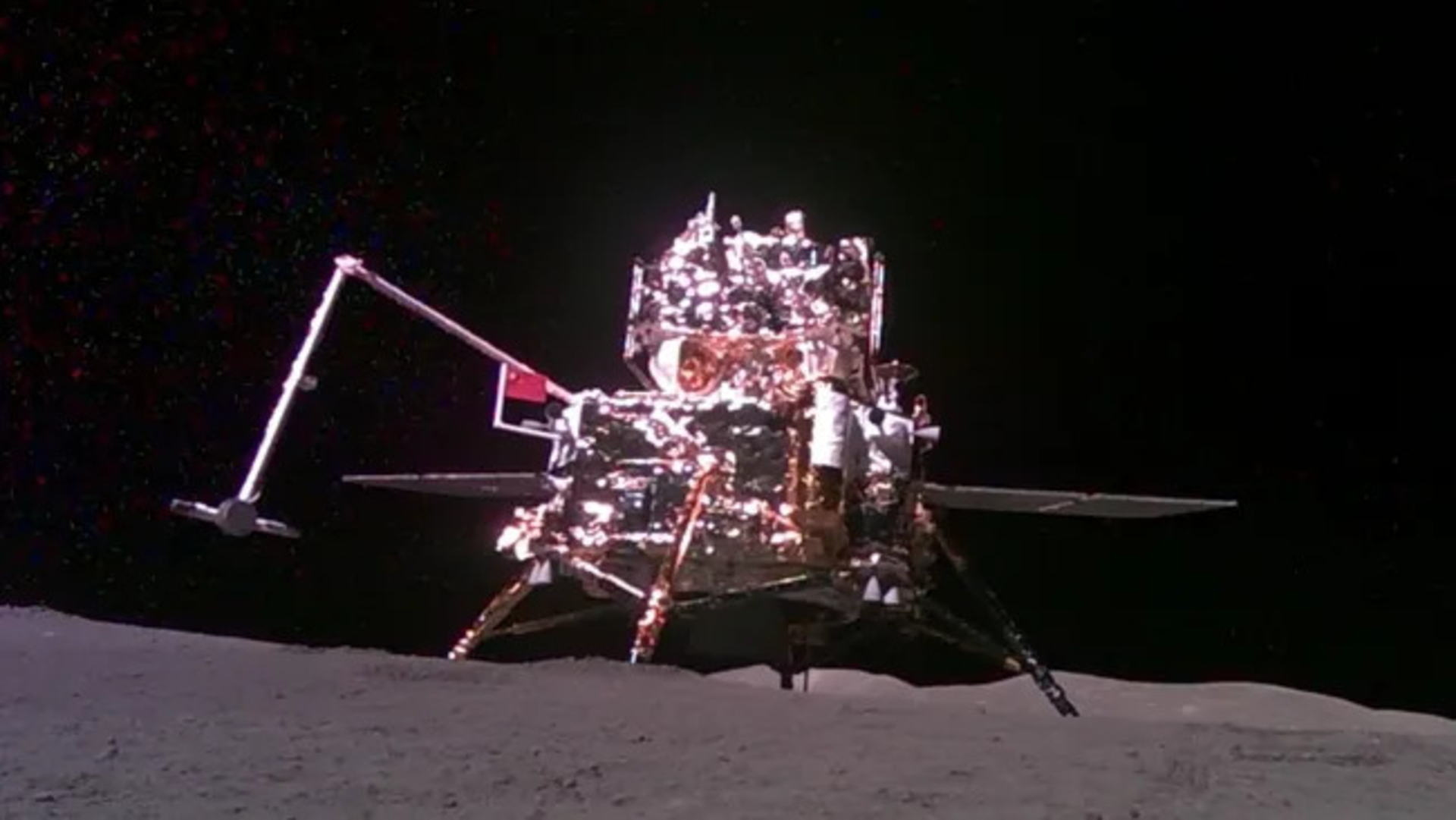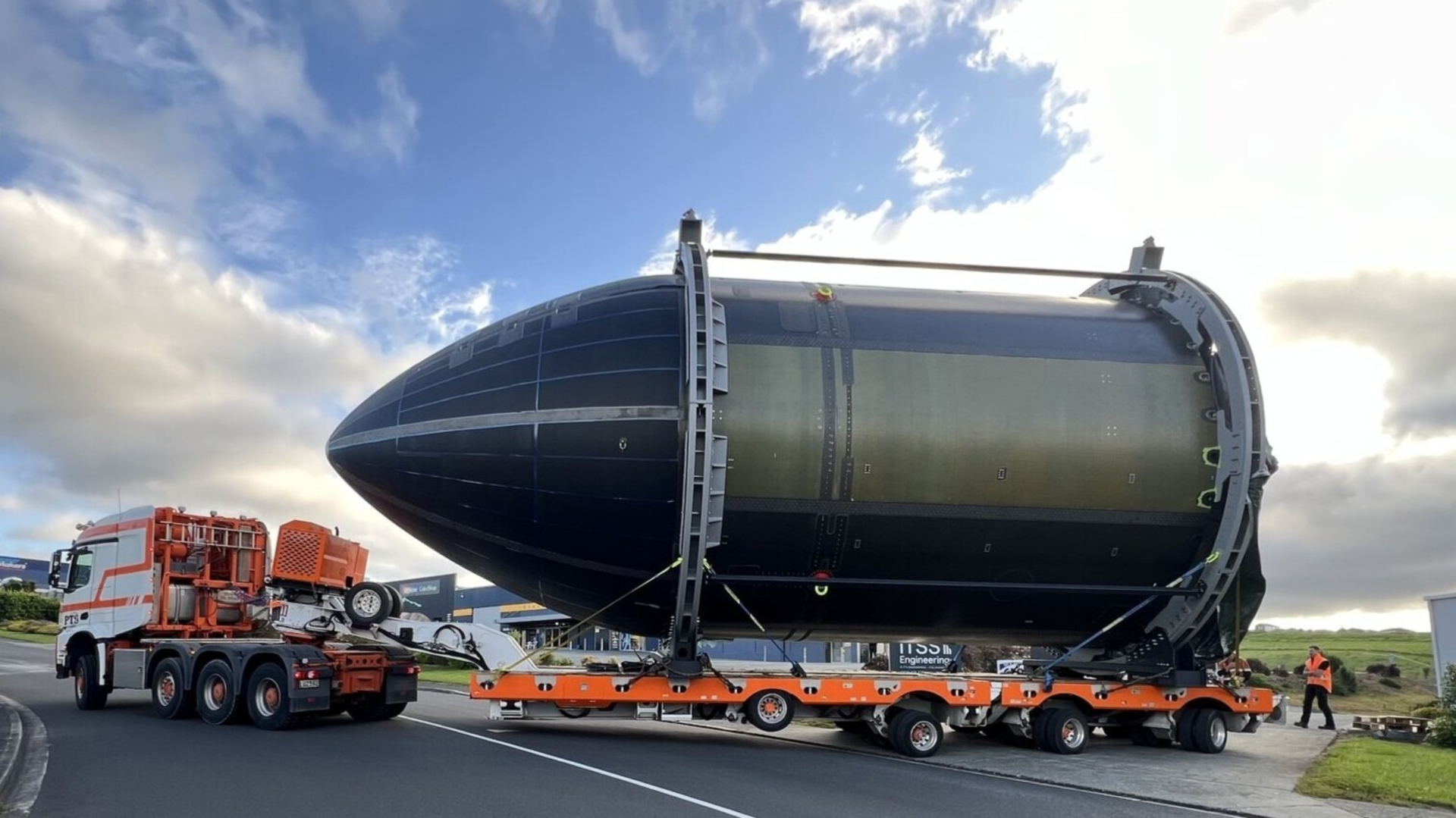1st samples ever collected from the moon's far side could help reveal where Earth got its water
On Earth, CI chondrites make up only 1% of all meteorites that have been collected, but they may be far more common on the moon.

Fragments of a rare type of meteorite have been found in the sample of material brought back from the lunar far side by China's Chang'e 6 mission, and they could help shed light on the origin of Earth's water.
The meteoritic debris found among the 1,935.3 grams (68.3 ounces) of lunar regolith sampled by Chang'e 6 belongs to a class of carbon- and water-rich meteorites known as CI (carbonaceous-Ivuna) chondrites. On Earth, these meteorites account for less than 1% of all collected space rocks; their most notable example is the Ivuna meteorite that fell in Tanzania in 1938. Out in space, however, it's a different story, with the asteroids Ryugu and Bennu, visited recently by Japan's Hayabusa2 mission and NASA's OSIRIS-REx, respectively, both displaying similarities to CI chondrites.
And these meteorites may also be relatively abundant on the moon.
"Based on the limited exogenous materials identified on the moon, CI chondrites seem to be more common there than on Earth," Mang Lin, a professor of isotope chemistry at the Guangzhou Institute of Geochemistry of the Chinese Academy of Sciences, told Space.com. "However, the current dataset is too small to draw any firm conclusions, and we'll need more measurements in the future to test this."
Chang'e 6 landed in the South Pole-Aitken Basin on the moon in June 2024 to bring back the first ever sample from the lunar far side. CI chondrites are fine-grained and highly porous, so they break apart easily and react with oxygen and water, which explains why they are so rare on Earth: because they break down or are chemically altered quickly. On the bone-dry moon, however, conditions are suited to preserving the chondrites.
Lin was part of a team led by Jintuan Wang and Zhiming Chen, both of whom also work at the Guangzhou Institute of Geochemistry, who identified unusual olivine-bearing fragments in Chang'e 6's sample. Through mass spectrometry, they found that the fragments contain levels of iron, manganese and zinc that imply that they are not native to the moon; a measurement of oxygen isotopes in the fragments subsequently confirmed that they are CI chondrites.
CI chondrite meteorites typically carry a wealth of volatiles, which are substances such as water and carbon dioxide that can exist as ice in the outer solar system and which have low boiling points. As such, they and other types of carbonaceous chondrites in general are considered as a possible source of water on Earth and the moon.
Breaking space news, the latest updates on rocket launches, skywatching events and more!
Yet their apparent presence in such significant quantities on the moon has come as a surprise to lunar scientists, and it suggests that there may have been more impacts of carbonaceous chondrite asteroids in the Earth-moon system in the distant past than had been thought. It's evidence that material formed in the cold of the outer solar system frequently found its way in-system to deliver water and other volatile gases to the inner planets.
"CI chondrites are certainly an important [water] carrier to consider because of their high volatile content," said Lin. "That said, there were probably multiple sources of water for both Earth and the moon, and we'll need more data in the future to really quantify how much each source contributed."
The findings were published on Oct. 20 in Proceedings of the National Academy of Sciences.

Keith Cooper is a freelance science journalist and editor in the United Kingdom, and has a degree in physics and astrophysics from the University of Manchester. He's the author of "The Contact Paradox: Challenging Our Assumptions in the Search for Extraterrestrial Intelligence" (Bloomsbury Sigma, 2020) and has written articles on astronomy, space, physics and astrobiology for a multitude of magazines and websites.
You must confirm your public display name before commenting
Please logout and then login again, you will then be prompted to enter your display name.
